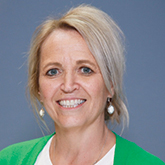Optimizing surgeon preference cards can lead to significant cost savings & reduced waste

A physician preference card audit is a valuable opportunity to reduce cost and eliminate waste in the operating room—without burdening staff or taking on another expensive project. HealthTrust’s Advisory Services team offers members a free preference card optimization assessment: In 30 days, they can complete an audit of select procedures and help increase efficiency in your OR.
“A preference card is like the ingredient list for surgical procedures,” says Drew Preslar, AVP of Advisory Services, HealthTrust. The card lists all that’s needed to prepare the OR for a specific procedure performed by a particular surgeon. This includes all supplies, drugs, patient positioning and room set-up. Prior to the operation, a team member uses the preference cards to pull the correct supplies and puts them on a cart so that everything is ready to go for the procedure.
Why audit preference cards?
Over time, preferences change. Physicians come and go, contracts and products are updated, and surgical techniques evolve. “If you’re not keeping up with the changes to these lists, the surgical team could be missing products or have extra supplies,” explains Preslar. “This leads to a few things. If there are supplies on the preference card that you’re not using, they will go into the OR, and then after the procedure, the products are thrown away without being used, or they are returned to stock, which can cause inventory inaccuracies. If there are delays in getting a product on the shelf or they are put back in the wrong spot, it can lead to over ordering. The excess inventory can then lead to having expired items.”
If the preference card isn’t up to date and the team ends up missing needed supplies during a case, then someone must leave the OR to go get the supplies, costing time and unnecessary exposure to the surgical environment. Inaccurate preference cards also affect documentation charges, since many hospitals utilize preference cards as the starting point for charging, and significant variation from these items could result in missed charges.
Updating and standardizing these cards not only results in less chance for waste, but it’s also an opportunity to evaluate which products are currently ideal for any given procedure—both from a patient outcome and a cost perspective. It can also improve efficiency and staff and physician satisfaction.
How Advisory Services can help
The Advisory Services team at HealthTrust helps you compare cost per case by physician. “For example, one surgeon may do a procedure and supplies cost $300, and another surgeon does the same procedure, but the average cost is $600,” says Preslar. A key question to ask is, “What is the impact to outcomes and length of stay with the additional supply cost?” The review enables you to consider what products the physicians are using and have data-driven conversations to make the best decisions for outcomes, quality and cost. This approach can be applied with physicians across multiple hospitals.
How the process works
The Advisory Services team’s process starts by identifying the procedures a member facility wants to review. “There are some common, more expensive procedures that are done in high volume across healthcare facilities,” explains Preslar. “These are the ones we prioritize.” Some of the typical procedures the team reviews include laparoscopic cholecystectomy (gallbladder removal), laparoscopic appendectomy (appendix removal) and knee arthroplasty (knee replacement).
The Advisory Services team then gathers at least six months of data. This includes reviewing what’s currently on the preference cards and case data sorted by physician and by procedure, to compare what was documented to the cards.
After the analysis, the findings and recommendations are shared with the facility, so service line leaders and physicians can determine which items to add, remove or change. Then the updates can be made to the preference cards to begin realizing the efficiency gains.
It can be challenging for surgeons to change the items they use during surgery. However, providing data and examples of peers who are doing it at a lower cost helps move the needle.

“We have found in our work that frequently, almost a third of the items on preference cards need to be modified or removed,” adds Preslar. “That means there are lots of opportunities for improvement.”
Making the case for WellSpan Health
WellSpan Health in Lancaster, Pennsylvania, recently partnered with HealthTrust’s Advisory Services team on an OR preference card audit.
“This process has been really good and will be extremely enlightening for our clinical teams,” says Melissa Boyles, Senior Director of Supply Chain Logistics and Distribution at WellSpan. She says that some OR team members don’t have awareness of the significant amount of supply chain work that goes into preparing surgical carts. “What it highlights is the opportunity to decrease our touches on surgical supplies. We know from the data analysis that certain supplies are getting stocked on carts 100% of the time, yet are only actually getting used 3% of the time,” she explains. The audit has provided line of sight and forces the team to have a dialogue about creating better efficiencies and reducing waste.
HealthTrust members can take advantage of this program and receive a free audit of up to three procedures.
To start an OR preference card audit, contact your HealthTrust Account Manager, or email the Advisory Services team at solutions@healthtrustpg.com
Share Email OR, PPI, Preference cards, Q4 22




